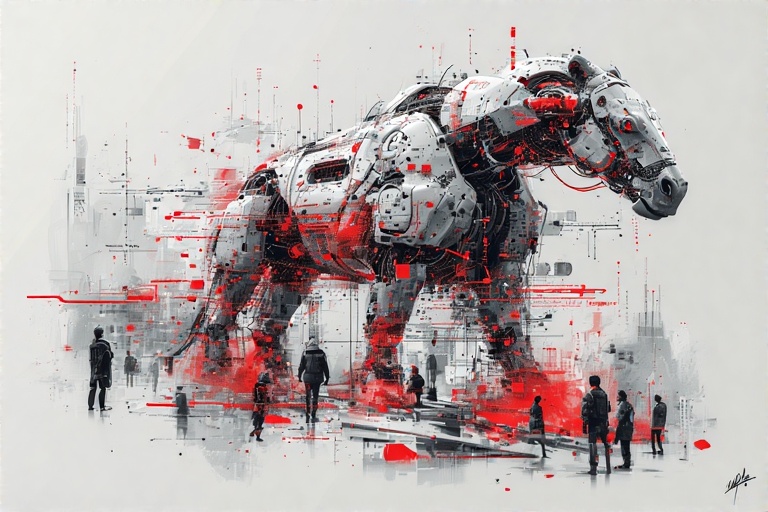Large language models (LLMs) have burst into mainstream awareness over the past three years, not just as text generators but as partners in creative work. Whether drafting a marketing email, sketching an ad concept or composing a short film script, these AI systems now play an active role in ideation, iteration and even final production. This article examines how LLMs function, explores real-world use cases, highlights their limitations and considers how they will continue to evolve the landscape of creativity.
1. The Technology Behind Creative AI
At their core, LLMs are deep neural networks trained on vast corpora of text—books, articles, social media posts, code repositories and more. By learning patterns of syntax, semantics and style, these models can predict one word after another to produce coherent passages. Advanced transformer architectures enable them to handle context over hundreds or thousands of tokens, making it possible to maintain tone and narrative structure across long documents. When coupled with fine-tuning techniques or prompt engineering, they can adopt specialized personas—an academic researcher, a brand storyteller or a technical analyst.
2. Empowering Content Creators
Writers, marketers and journalists have been among the first to embrace LLMs. By supplying a few bullet points or a simple prompt, professionals can generate a structured blog outline or a draft social media post in seconds. Let me show you some examples of how teams use these capabilities:
- Ad copy brainstorming: A marketing lead types a brand slogan and product benefits, then refines the three strongest headlines suggested by the model.
- Article drafts: Reporters feed interview transcripts into an LLM to produce concise summaries and pull quotes for a news story.
- Localization support: Content teams ask the model to rewrite web copy in multiple regional dialects, preserving tone while adjusting idioms.
These workflows cut initial drafting time by up to half, allowing humans to focus on higher-order editing and strategic direction.
3. Revolutionizing Visual Design
Though primarily text-based, LLMs are increasingly integrated with image synthesis tools. Prompting a multimodal system with “a minimalist poster for a virtual conference in pastel tones” yields a polished draft ready for designer review. Creative teams use this to prototype logos, layout ideas and even storyboards without opening a graphics editor. The rapid iteration cycle—enter a new prompt, receive an improved draft, adjust details—accelerates concept validation and fosters bolder experimentation.
4. Soundtracks and Audio Creation
In music and audio production, companion models can suggest chord progressions, generate lyrics or propose sound effects. A songwriter might enter a theme—“summer road trip”—and receive a verse/chorus structure complete with rhymes. Podcasters use AI-driven voice cloning and ambient noise generation to fill gaps or create transitions without booking a studio. This democratizes audio creation, enabling small teams and solo creators to achieve production quality once reserved for larger studios.
5. Scriptwriting and Video Pre-Production
Movie studios and independent filmmakers have begun feeding scene descriptions into AI tools to generate dialogue drafts and shot lists. Automated storyboarding services convert text prompts into frame sketches, helping directors visualize scenes before scheduling actors or crew. This reduces wasted time on unapproved concepts and speeds up pitching processes. Even educational video creators rely on these systems to produce lecture scripts and slide outlines in minutes rather than days.
6. Balancing Assistance and Originality
While LLMs can boost efficiency, they also raise questions about creative ownership and originality. Experiments suggest that heavy reliance on AI may dampen independent ideation—users become accustomed to accepting AI suggestions rather than pushing beyond safe patterns. To maintain creative muscle, many professionals adopt a “co-creation” mindset: they generate multiple AI drafts, pick one element they like and then deliberately deviate when refining. This hybrid approach preserves human ingenuity while leveraging AI speed.
7. Risks and Ethical Considerations
Generative models can confidently produce incorrect or biased content, a phenomenon often called “hallucination.” Left unchecked, these errors can misinform readers or propagate stereotypes. Copyright concerns also surface when AI output inadvertently replicates protected works. Organizations must implement guardrails—fact-checking processes, bias audits and usage policies—to ensure responsible deployment. In regulated industries such as healthcare, legal or finance, human oversight remains indispensable.
8. Measuring Creative Impact
Quantifying the value LLMs bring to creative teams requires both qualitative and quantitative metrics. Time saved on first drafts, reduction in revision cycles and faster prototype approvals can be tracked on project management dashboards. Subjective measures—team satisfaction, perceived boost in idea diversity and willingness to explore riskier concepts—complement hard data. Firms that integrate LLM tools with clear usage guidelines and training see the greatest gains in both productivity and creative confidence.
9. The Future of AI-Augmented Creativity
Looking ahead, we can expect tighter integration between language, vision and audio models, enabling fully immersive multimodal creativity. Agents that plan multi-step projects—drafting a novel, generating accompanying illustrations and composing a theme soundtrack—are already in early development. Advances in explainability will help creators understand why models make certain suggestions, fostering deeper collaboration. However, true autonomous creativity—where AI defines goals, evaluates progress and iterates independently—remains an open research challenge.
Conclusion
Large language models have swiftly moved from curiosities to central tools in content, design, music and video production. They shorten ideation loops, lower barriers to entry and unlock new forms of expression. Yet their power must be wielded thoughtfully: creative teams should embrace co-creation patterns, maintain rigorous oversight and safeguard originality. When humans and machines collaborate effectively, the result is not a takeover by AI but a renaissance of human creativity empowered by intelligent assistance.







Add a Comment